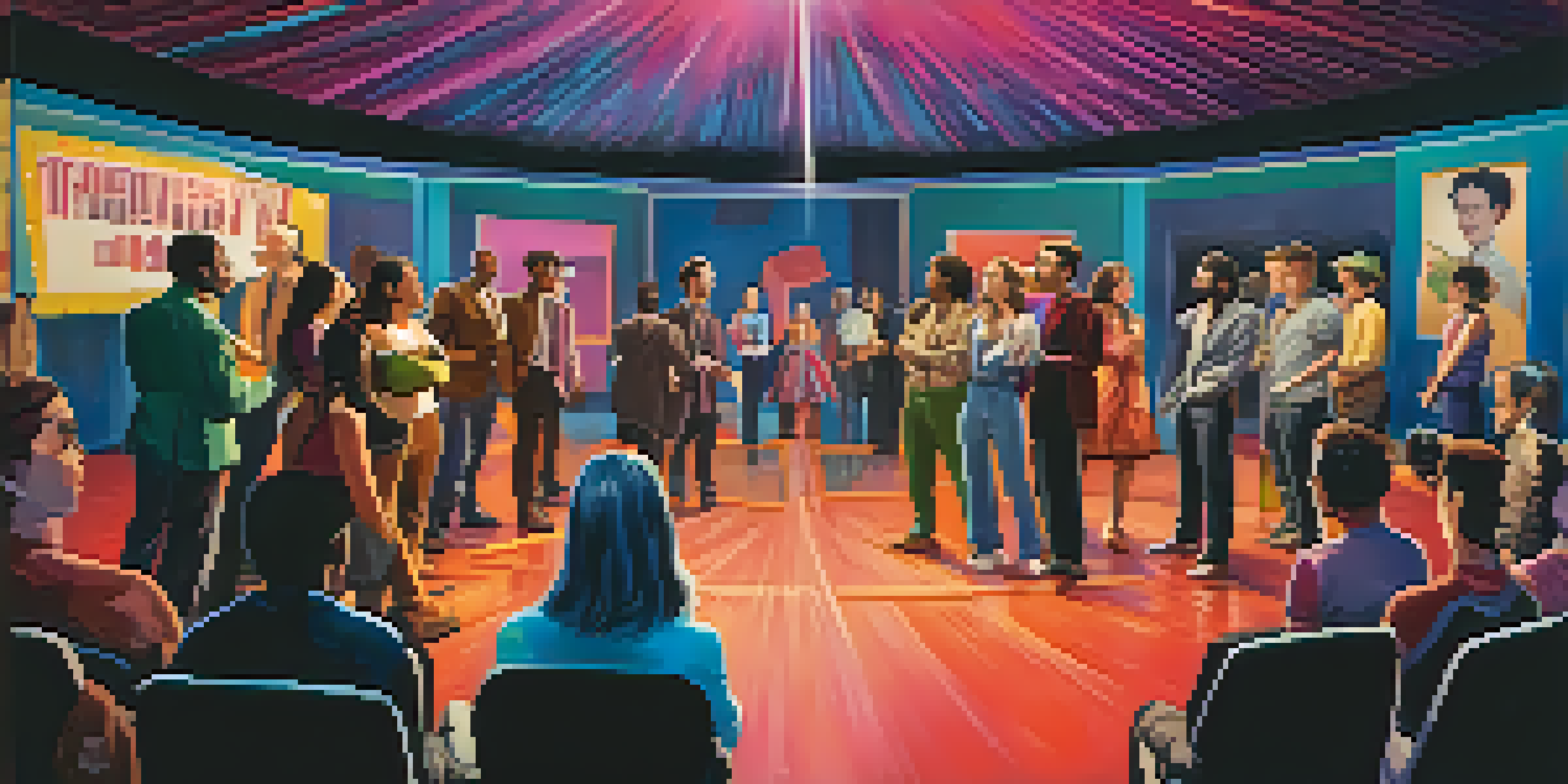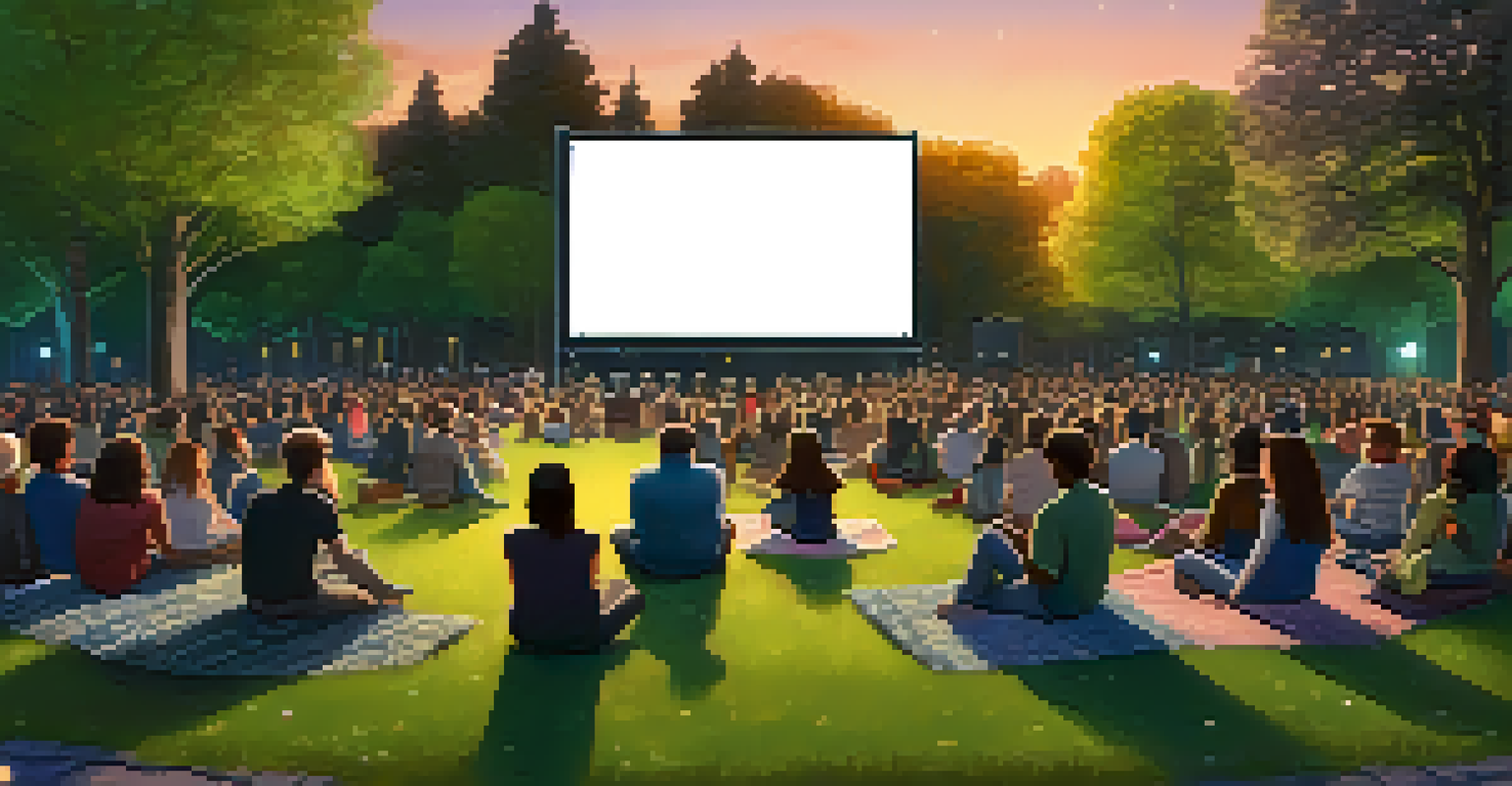The Role of Film in Shaping Gender Norms and Expectations Today

The Historical Influence of Film on Gender Roles
Film has long been a mirror reflecting societal norms, including gender roles. In early cinema, women were often portrayed as damsels in distress, while men were the heroes. These portrayals not only entertained but also reinforced the idea that women needed protection and men were the protectors.
Films are often the most powerful way to shape our understanding of cultural norms and gender roles.
As film evolved, so did the representation of gender. The emergence of strong female characters and complex male roles began to challenge traditional norms. Films like 'Thelma & Louise' and 'Rocky' showcased women and men in roles that defied stereotypes, encouraging audiences to rethink gender expectations.
However, the battle against outdated portrayals continues. While progress has been made, many films still fall back on clichéd gender representations, demonstrating the need for ongoing dialogue about the roles that film plays in shaping our understanding of gender.
Modern Films and the Shift in Gender Representation
In recent years, there has been a noticeable shift towards more nuanced portrayals of gender in films. Movies like 'Wonder Woman' and 'Moonlight' have pushed boundaries by presenting characters who embody a spectrum of identities and experiences. These films not only entertain but also educate audiences about the complexities of gender.

This shift is crucial in an era where gender fluidity and non-binary identities are increasingly recognized. By showcasing diverse experiences, modern films challenge outdated norms and help audiences understand that gender is not simply black and white. This expanded representation can foster greater acceptance in society.
Film Reflects Changing Gender Roles
Cinema has evolved from traditional portrayals of gender to more nuanced and diverse representations that challenge outdated norms.
Nevertheless, the fight for authentic representation continues. While progress is evident, the industry must remain vigilant against reverting to simplistic portrayals that do not capture the true diversity of human experience.
The Impact of Film on Young Audiences' Perceptions
Young audiences are particularly impressionable, making the portrayal of gender in film crucial for their development. Films often shape their understanding of what it means to be masculine or feminine. For instance, a movie featuring a strong female lead can inspire young girls to pursue leadership roles in their own lives.
The stories we tell reflect our values and beliefs, and they can influence how we perceive each other and ourselves.
Conversely, when films depict rigid gender roles, they can perpetuate harmful stereotypes. Children may internalize these norms, believing that certain behaviors are inherently tied to their gender. This is why it's essential for filmmakers to consider the messages they send to younger viewers.
In an age of increasing awareness, many filmmakers are striving to create content that promotes positive role models. By doing so, they help cultivate a generation that values equality and diversity, making a lasting impact on future perceptions of gender.
The Role of Social Media in Film and Gender Norms
Social media has revolutionized how audiences engage with film and its themes, including gender norms. Platforms like Twitter and Instagram allow viewers to voice their opinions and hold filmmakers accountable for their portrayals of gender. This increased dialogue can lead to more thoughtful and inclusive filmmaking.
Moreover, social media has given rise to movements advocating for better representation in film. Hashtags like #MeToo and #TimesUp have highlighted the need for change within the industry, urging filmmakers to consider the implications of their work on gender expectations. This public scrutiny can drive a shift towards more responsible storytelling.
Social Media Drives Gender Dialogue
Platforms like Twitter and Instagram empower audiences to engage in conversations about gender representation in film, fostering accountability among filmmakers.
As audiences become more vocal, filmmakers are increasingly aware of the importance of diversity in their projects. The interplay between social media and film can foster a more equitable portrayal of gender, ultimately reshaping societal norms.
Documentaries: A Different Perspective on Gender
Documentaries offer a unique lens through which to explore gender norms and expectations. Unlike fictional films, documentaries often present real-life stories that can challenge preconceived notions about gender. Films like 'Paris is Burning' and 'Disclosure' illuminate the struggles and triumphs of marginalized communities, fostering empathy and understanding.
The power of documentaries lies in their ability to provide context and depth to gender issues. By showcasing diverse narratives, they encourage viewers to confront their own biases and assumptions. This educational aspect can lead to a more informed audience who is better equipped to engage with gender topics in their daily lives.
However, it’s important for documentary filmmakers to approach their subjects with sensitivity and authenticity. Misrepresentation can reinforce harmful stereotypes, so ethical storytelling is crucial in shaping a more nuanced understanding of gender.
The Influence of International Cinema on Gender Norms
International cinema plays a significant role in shaping global perspectives on gender. Films from different cultures can offer fresh insights and alternative narratives that challenge Western norms. For instance, Bollywood films often portray strong female leads who defy traditional expectations, prompting audiences to broaden their understanding of gender roles.
This cross-cultural exchange can foster a more diverse representation of gender in mainstream media. As audiences are exposed to a variety of stories, they may begin to question their own cultural assumptions about gender. This can lead to a richer conversation around gender norms on a global scale.
International Cinema Broadens Perspectives
Films from various cultures provide alternative narratives that challenge Western gender norms and encourage a more global understanding of gender roles.
However, it’s essential to approach international films with an open mind. Cultural context is vital in understanding the nuances of gender representation, and it’s crucial to appreciate these films for their unique perspectives rather than imposing Western standards.
The Future of Film and Gender Representation
The future of film and gender representation looks promising, with a growing emphasis on inclusivity and diversity. Filmmakers are increasingly recognizing the importance of telling stories that reflect the complexity of human experiences. This shift is essential in shaping a more equitable society where all voices are heard.
As audiences demand more authentic depictions of gender, the industry is responding with a wave of innovative storytelling. From diverse casting to behind-the-scenes roles for underrepresented groups, the landscape of film is evolving. This progress not only benefits the industry but also enriches society as a whole.

Ultimately, the role of film in shaping gender norms is a dynamic and ongoing journey. By continuing to challenge outdated representations and advocating for inclusivity, filmmakers can harness the power of storytelling to foster a more understanding and accepting world.